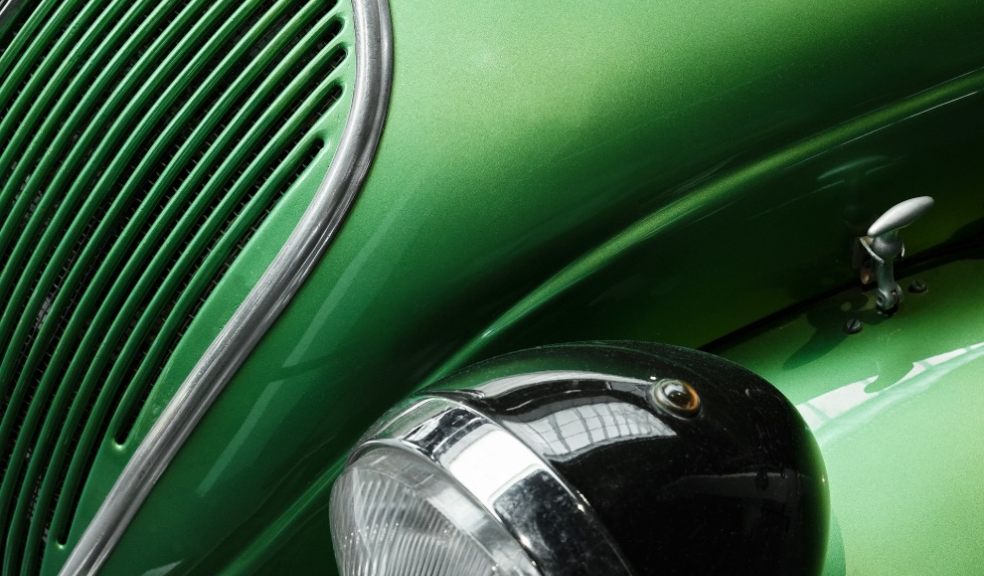
The Art of Reviving Vintage Vehicles with Style and Expertise
There’s something undeniably captivating about vintage vehicles. Their design, craftsmanship, and charm tell stories of a bygone era—when motoring was as much about style and personality as performance. For enthusiasts and collectors alike, reviving these timeless machines is more than a mechanical process; it’s a labor of love that blends precision, history, and artistry.
In this article, we’ll explore the multifaceted process of restoring vintage cars, from initial assessment to final polish, and how the right professionals—including expert bodywork and classic car sprayers—make all the difference.
Understanding Vintage Vehicle Restoration
Restoring a vintage vehicle means bringing it back to life while preserving or enhancing its historical value. It might be a pre-war roadster, a post-war American classic, or a beloved British icon like the Mini Cooper or Jaguar E-Type. Restoration levels can vary widely:
- Cosmetic Restoration focuses on the vehicle’s appearance—paintwork, interior, and trim.
- Mechanical Restoration involves engine rebuilding, transmission, suspension, and brakes.
- Full Restoration or “nut and bolt” takes the car down to its frame, addressing every single component.
Whether the goal is concours-quality perfection or a reliable weekend driver, each project requires a tailored approach and specialized skill.
The Restoration Process: Step-by-Step
1. Initial Assessment
Every restoration begins with a full assessment of the vehicle’s condition. This includes body integrity, rust levels, mechanical functionality, and availability of parts. The restorer and owner will also discuss goals—original restoration, modifications, or somewhere in between.
2. Disassembly
Once the project is greenlit, the vehicle is carefully disassembled. Each part is cataloged, photographed, and labeled for eventual reinstallation or replacement.
3. Bodywork and Rust Repair
Older cars often suffer from rust, especially in damp climates. Panels may need to be cut out and replaced, or carefully repaired to maintain authenticity. Achieving the correct panel alignment and gap tolerances is critical at this stage.
4. Mechanical Overhaul
The engine, gearbox, and suspension systems are dismantled and rebuilt. This may include machining parts, replacing seals and gaskets, or upgrading with modern components for better reliability.
5. Interior Restoration
The inside of a vintage vehicle should be just as impressive as its exterior. Original fabrics, dashboards, and seat structures are restored or reproduced. Restorers aim to preserve the vehicle’s soul while ensuring comfort and durability.
6. Paint and Finish
Painting a vintage car is an art form in itself. Classic curves require even paint application and careful polishing. Professional classic car sprayers in Essex, such as those at Intensive Car Unit, are often sought after for their ability to replicate original color codes, blend modern techniques, and deliver flawless finishes. The right spray booth, materials, and experience turn raw panels into show-ready masterpieces.
Balancing Style with Function: Custom Upgrades
While purists prefer absolute authenticity, many restorations blend old-school aesthetics with modern convenience. Known as “resto-mods,” these projects keep the vintage style intact but incorporate:
- Disc brakes for better stopping power
- Modern wiring and LED lighting
- Air conditioning and heating
- Bluetooth and modern infotainment
This approach enhances everyday usability while respecting the vehicle’s heritage.
Finding and Fabricating Parts
Sourcing parts for vintage vehicles is one of the biggest challenges in restoration. While some manufacturers still produce classic components, others require:
- Searching vintage part markets and auctions
- Reaching out to enthusiast communities
- Custom-fabricating rare parts with CNC machines or 3D printers
In many cases, skilled fabricators must recreate trim, badges, or panels from scratch—testament to the craftsmanship required.
Professional Expertise: Why It Matters
Vintage car restoration isn't just about tools—it’s about talent. Choosing the right professionals can be the difference between a car that runs and a car that shines.
Experienced restorers understand how to:
- Respect original design
- Achieve historically accurate results
- Blend craftsmanship with new technologies
- Navigate regulations, such as MOT exemption and insurance requirements for classics
Essex, in particular, is home to some of the UK’s most reputable restoration experts, including paint specialists and classic car sprayers who deliver concours-quality finishes and expert color matching.
Case Studies: Beautiful Revivals
Some iconic restoration projects include:
- Jaguar E-Type: Often called the most beautiful car ever made, restoring this British classic involves attention to delicate curves, polished chrome, and a finely tuned inline-six engine.
- Volkswagen Beetle: Beloved worldwide, its simplicity makes it ideal for DIY restorations, but a professional touch can truly elevate its appearance and longevity.
- Ford Mustang: With plentiful parts and an enthusiastic community, the Mustang remains a favorite for resto-mod enthusiasts looking to add power and flair.
These cars, once tired and worn, now win awards, turn heads, and bring joy on every drive.
The Value of a Restored Vintage Car
Restored vintage vehicles offer more than aesthetic pleasure. They can:
- Increase in monetary value, often appreciating over time
- Serve as unique investments and inheritance items
- Create emotional and nostalgic connections
- Provide access to shows, clubs, and rallies
A well-restored car reflects not just the past, but also the personality and vision of its owner.
Trends in the Classic Car Community
The classic car scene continues to evolve. Current trends include:
- Electric conversions of vintage cars, offering zero-emissions driving with timeless looks
- Digital dashboards disguised within traditional interiors
- Smart GPS tracking and security systems for valuable restorations
Restoration shops are adapting to these innovations while staying true to heritage.
Choosing the Right Partner
Before starting your restoration journey, ask potential specialists:
- Do they have experience with your make/model?
- Can they provide examples or references?
- What’s the timeline and cost structure?
- Are they licensed and insured?
Trust and communication are key. A great restorer listens to your vision, offers expert guidance, and takes pride in their work.
Conclusion
Restoring a vintage vehicle is more than rebuilding a machine—it's preserving history, expressing individuality, and reviving artistry. With the right team of experts, including classic car sprayers, and a clear vision, your project can result in a stunning, functional masterpiece that draws admiration wherever it goes.
Whether you're dreaming of your first restoration or preparing for your next, remember: it's not just about the destination—it's about the passion behind the journey.

















